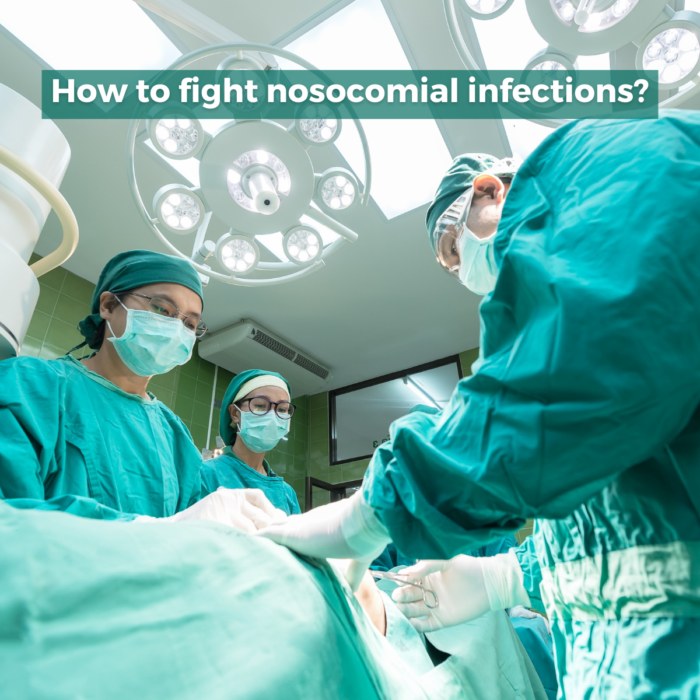According to the WHO, a nosocomial infection – or hospital-acquired infection – can be defined as an infection acquired in hospital by a patient admitted for an other reason than the infection itself.
How are infections acquired?
Bacterial infections can be spread by skin contact, by droplets (sputum), by airborne transmission, either by cross-transmission between patients or nursing staff. Also by contamination of the hospital environment (water, air, equipment, food).
Indeed, the hospital environment has its own bacteriological ecosystem. In fact, the basic rules of hygiene (masks, gloves, disinfection of surfaces) are not enough to prevent contaminations or infections. Moreover, hospital-acquired bacterial infections are generally more resistant than those found anywhere else.
Nosocomial diseases represents two major challenges. The first is to avoid contamination during hospital stays. The second is prevention through the proper use of antibiotics, to prevent antibiotic resistance.
Contributing factors to nosocomial infections
Elderly people are more susceptible to nosocomial infections. Depending on the co-morbidities they may have, as are immunocompromised people, newborns (especially premature babies), polytrauma patients and burn victims. To this end, the execution of invasive acts, necessary for the treatment of the patient, are also factors favouring bacterial transmission: urinary catheterisation, catheterisation etc.
How to fight against nosocomial diseases?
The prevention of nosocomial infections is complicated by the following fact: most nosocomial infections are caused by a combination of factors. While it is not possible to control factors related to the medical situation of patients, the quality of care and the safety of the hospital environment must be the object of reinforced vigilance and preventive actions.
These infections occur worldwide, in both developed and developing countries. For instance, nosocomial infections concern 7% in developed countries and 10% in developing countries.
Therefore, SPARTHA Medical develops coatings derived from natural biopolymers prevent infection and to reduce inflammation without affecting the function of any medical device. In other words, SPARTHA’s innovation reduces post-implant complications (such as infection), and aim at optimising implantations on at-risk patients by immunoprofiling personalisation. At a larger scale, this innovation will consequently reduce care costs by decreasing revision procedures such as the duration of treatments.
To find out more: click here

